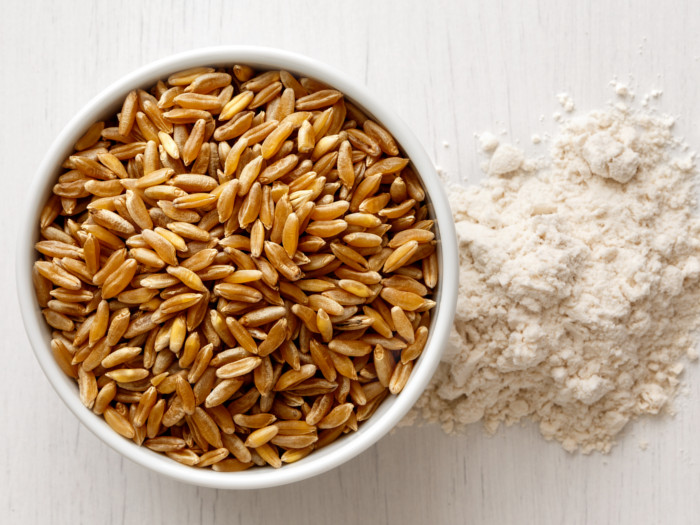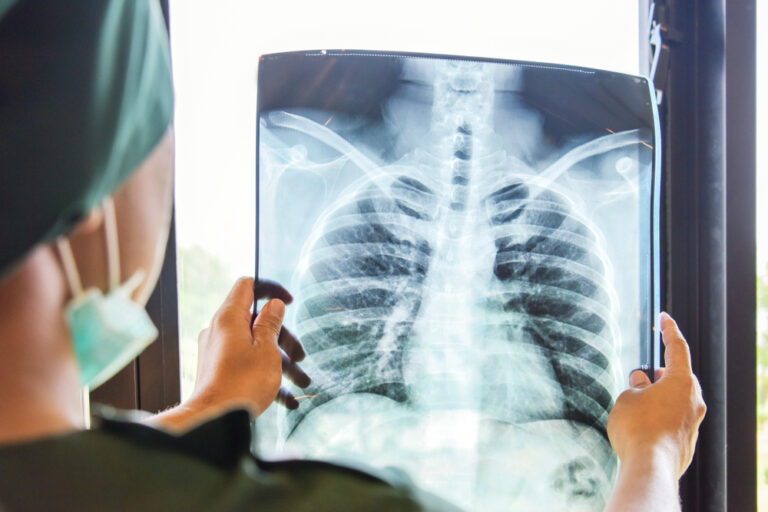
This autoimmune disease is tricky to diagnose because it mimics so many other illnesses. If you have more than four of any of these symptoms of lupus, it may be time to call your doctor.
Read on to learn more about this condition!
You feel like you have the flu, but you’re not getting better
Fever, chills, muscle aches, and sleepiness are all classic signs of the common flu. But many people don’t realize they’re also lupus symptoms, says Delphine Lee, MD, PhD, director of the Dirks/Dougherty Laboratory for Cancer Research and Department of Translational Immunology at John Wayne Cancer Institute at Providence Saint John’s Health Center in Santa Monica, California.
‘The difference between the flu and lupus is that the flu gets better in four to 10 days,’ she says, adding that these signs of lupus may last for weeks or months or come and go in cycles.
You’re losing weight but you’re not on a diet
Sudden overnight weight loss may sound like a dream, but it may be one of the first lupus symptoms. Because lupus is an autoimmune disorder, causing the body’s immune system to attack itself, it can throw your thyroid and hormones out of whack, which in turn affects your weight.
Oddly enough, weight gain can also be one of the signs of lupus. Dr. Lee says weight loss is more common but lupus can also cause water retention, which may manifest as weight gain in some people.
You have tender bumps on your neck
Lymph nodes are small bean-shaped structures throughout your body that help fight infection and filter out harmful substances. Normally you can’t see or feel them but when they’re working overtime, as in the case of lupus, they can become visibly swollen and painful to touch.
The most common place to feel them is along your neck, down your jaw, and behind your ears, but they can also swell in your groin, abdomen, armpits, clavicle, and other places. Those looking out for lupus symptoms will want to check in on their lymph nodes from time to time.
You get a rash in bright sunlight
A red, butterfly-shaped rash over your nose and cheeks that is triggered by sunlight is one of the more unique symptoms of lupus, Dr. Lee says. At first, it may look like you simply have a flushed face from the heat, but unlike a heat rash, a lupus rash may linger long after you’ve left the sun.
‘Exhausted’ doesn’t even begin to describe how tired you feel
‘This isn’t just your everyday tiredness; with lupus, you feel like you literally can’t get out of bed,’ Dr. Lee says. Of course, exhaustion can have many causes ranging from depression to cancer to mononucleosis, so this symptom on its own isn’t indicative of lupus but if it’s one of a longer list of lupus symptoms, it’s worth considering.
You have blisters in weird places
A blister on your heel? Call a cobbler. A constellation of blisters inside your nose or mouth? Call a doctor. There are other illnesses that cause painful bumps on your body (such as STDs) but lesions on your mucus membranes are one of the common signs of lupus, Dr. Lee says.
Your hair is coming out in clumps
While lupus can affect either gender, 90 percent of all cases diagnosed are in women between the ages of 15 and 44. And one of the most devastating symptoms of lupus is the loss of your beautiful locks, Lee says. You may notice your hair thinning and losing significant volume over a short period of time.
Your hands are freezing, even in the summer
Many women have cold hands and feet, as many men can attest. (‘Did you just marry me because you wanted a bed warmer?’) But if your fingers or toes often get extremely cold, turn blue, or feel numb it could be Raynaud’s syndrome. This syndrome is an illness that affects circulation in the extremities and can be one of the signs of lupus, Dr. Lee says.
You feel like you’ve got arthritis but you’re only 30
Painful, swollen joints aren’t supposed to be a problem until you’re elderly, right? Not so fast, Dr. Lee says. Unfortunately, many young lupus patients experience arthritis-like symptoms in their joints, especially in their legs, with the pain being the worst in the morning and getting better as the day goes on.
You have chest pain
‘Heart attack!’ is everyone’s first (panicked) thought when having chest pain, but if your doc clears you for heart disease, lupus symptoms may be the cause. The autoimmune disease can cause swelling throughout the body, including in the sacs surrounding the heart and lungs, causing consistent, dull chest pain, Dr. Lee explains.
If it’s your lungs that are primarily affected, you may also experience shortness of breath. Chest pain may be one of the signs of lupus, but it can also be the sign of a lot of other very serious illnesses. If you are experiencing chest pains, see a doctor immediately.
You’re having a psychotic break
‘Lupus can attack any organ in the body and that includes the brain, sometimes causing psychosis,’ Lee says. ‘Many people come in thinking they’ve suddenly got schizophrenia or are going crazy but in reality, it’s the disease.’
Neurological symptoms of lupus can include hallucinations (both visual and auditory), paranoia, confusion, moodiness, and seizures. If you are experiencing these things and have no prior history of mental illness, you may actually be experiencing one of the signs of lupus.

























